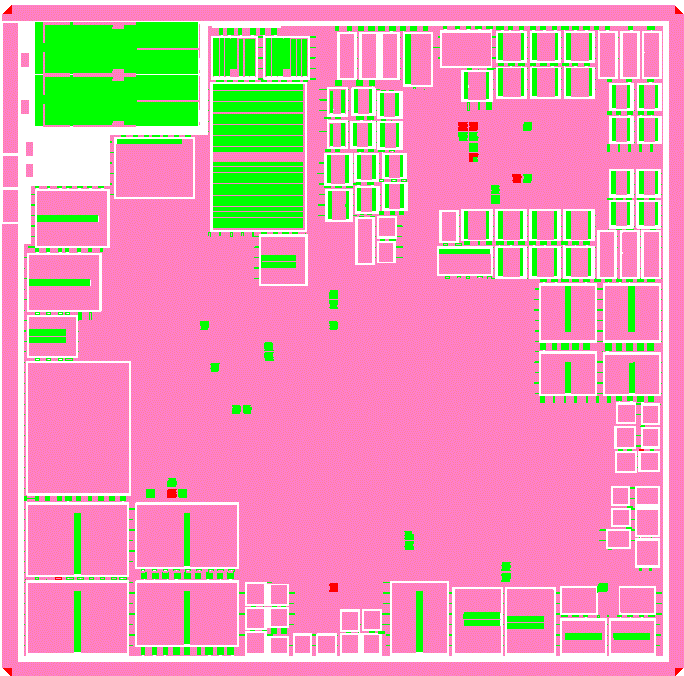Clip Extraction with Logical Layer Operations
|
Recently Artwork was asked about the possibility of adding logical layer operations (AND, OR, XOR, MINUS) to the Clipextract application. The need for such operations is common - process layers may now include two masking where one consists of parallel lines and the second consists of "cuts" across those lines. So we've added additional code that enables such layer operations. |
Command Line Syntax Download |

1. Start by opening a multi-layer GDSII file and load the layers we wish to process. This only needs to be done once.
2. A call is made to the explode function. We pass it the coordinates of the window we wish to clip out. The exploder extracts all the polygons that cross this window and puts them into memory. Each polygon is "tagged" with its layer.
3. We want to perform a MINUS operation between layers 1 and 2. To do this the polygons belonging to Layer 1 are extracted and placed into an array and the polygons belonging to Layer 2 are placed into a second array. Then the QisBool is called to perform the MINUS operation. The results are stored in a 3rd array (we call INT for Intermediate).
4. Now we want to perform an XOR between the intermediate results (INT) and Layer 3. The polygons for Layer3 are extracted from the exploder's buffer.
5. Now that we have our two input arrays we call QisBool a second time to perform the XOR operation. The results are stored in an array. At this point, the data can be saved as a GDSII file or processed by the client as desired.
To process the next clip, a call is made to the exploder to extract a new set of polygons and the process is repeated.

